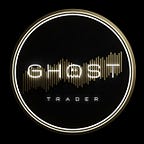Ghost Trader — Bank Runs-A-Go-Go
As you have probably already heard, the US banking sector has suffered a bit of trouble over the last week or so. The cumulative effects of rising Fed rates, fears of regulatory overreach over the cryptocurrency markets, and the macroeconomic realities have made their mark. What we have now is a good old-fashioned bank run on our hands. Undoubtedly, we could experience significantly more pain. For the moment, let us take a moment to understand what happened already before we consider what the future could hold.
Bank Runs — What Are They?
First, we should probably deal with some basic terminology, starting with what we mean by the term “bank run”. A bank run occurs when a large number of customers withdraw their deposits from a bank due to concerns about the bank’s solvency or ability to meet its obligations.
In the short term, a bank run can lead to liquidity problems for the affected bank as it struggles to meet the demand for withdrawals. Essentially, fractional lending ensures that most banks do not hold sufficient liquidity to make all depositors whole on demand and all at once. If depositors lose faith, their attempt to be the first out the door — so to speak — can cause a virtual stampede to make it out whole.
This can lead to a vicious cycle where more customers continue to withdraw their deposits, causing the bank’s financial position to deteriorate further. In some cases, banks may need to seek emergency funding or government support to avoid collapse. We saw this during the 2007–2008 subprime mortgage collapse, as well as a significantly less-extreme version just over the past weekend.
Keep in mind, being illiquid does not mean holding an insufficient volume of assets. The troubled banks in question hold sufficient assets in the form of mortgage-backed debt and longer duration treasury instruments. Unfortunately, these debt instruments do not provide the liquidity needed to forestall a bank run. As mentioned above, all banks that participate in fractional reserve lending bear some risk of a potential bank run.
Many countries provide some minimum guarantees to their banks, especially for non-commercial retail depositors. In the US, the FDIC (Federal Depositor Insurance Corporation) guarantees deposits up to $250,000, for example. The FDIC and the Federal Reserve both stepped in to offer guarantees for the assets of all depositors of Silicon Valley Bank (SVB) and other potentially failing banks. By doing so, they have essentially guaranteed to provide bridge liquidity for these banks, to ease the overhang between the need for immediate liquidity for redemptions on the one hand, and the lower-risk assets held by the banks to protect against inflation.
The Potential For Contagion
In the broader market, bank runs can also have a contagion effect, where concerns about the solvency of one bank lead to concerns about other banks in the system. This contagion effect can lead to a broader loss of confidence in the financial system, causing a sell-off in markets and potentially triggering a wider economic downturn. This worry on the part of policymakers and bankers alike no doubt inspired the prompt action to staunch the proverbial bleeding we witnessed recently.
Bank runs can have significant impacts on both the affected bank and the broader financial system. Obviously, the impact of a bank run on the broader markets will depend on a number of factors, including the size and significance of the affected bank, the overall health of the financial system, and the response of policymakers and regulators.
Many of the decision makers in question remember vividly both the dot com bubble and the 2007 financial crisis, as they witnessed firsthand just how quickly conditions can deteriorate. Most observers recognize that in some cases, swift and decisive action by policymakers can help to restore confidence and limit the impact of a bank run on the broader markets. While the situation still remains unsteady, the actions of the US government and Federal Reserve seem to have calmed the markets for the moment. Time will tell, however , how this all will eventually play out.
Ghost Trader, Stablecoins, and The Market As We See It
For our purposes here at Ghost Trader, we have watched the developments with interest. Despite the depegging of USDC, the stablecoin we use to reward our contributors, we remain confident that Circle will right their ship — especially now that their deposits seem safe. We will continue to use USDC as long as our confidence persists. We anticipate that recent troubles will eventually strengthen USDC, making it even more resilient to depegging in the future.
If circumstances change, we have several options upon which we can rely — from BUSD, USDT, or even Ethereum itself. The beauty of our project is our resilience and agility. Our project does not depend on the safety of USDC, or any other coin or asset. Traditional markets remain global, and so does our remit. Wherever there are markets, you will find Ghost Trader, bridging the divide.
Join Us
We would like to invite you to join us on this journey. No better time exists than the present to bridge the divide. Please be sure to stay tuned to our social media outlets moving forward for updates and news of the Ghost Trader project. We invite you to check out our official Ghost Trader website, join us either on Telegram or Discord, follow us on Twitter, LinkedIn, Facebook, and Instagram. Also, be sure to check out the podcast found here.
